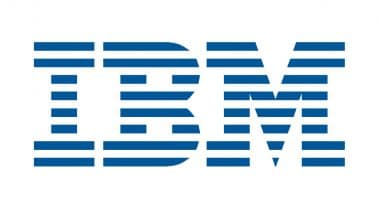The financial stability and growth potential of a company can be significantly undermined by the silent yet pervasive issue of revenue leakage. This phenomenon occurs when money that should be captured by a business slips through the cracks, often unnoticed until it accumulates to a substantial loss. Identifying and mitigating this leakage is vital for organizations aiming to maximize their profitability and achieve long-term sustainability. Below, we delve into the multifaceted aspects of revenue leakage, dissecting its causes, implications, and strategies to curb its impact.
Understanding Revenue Leakage and Its Prevalence in Business
At its core, revenue leakage is the unintentional loss of revenue that businesses fail to capture. These losses can occur across various stages of the operational cycle, from sales and billing to delivery and after-service support. Often undetected, these leaks slowly drain resources and profitability from companies, regardless of size or industry.
The prevalence of revenue leakage in business is alarmingly common, though the intensity varies. Certain industries, like telecommunications, utilities, and software services, are more susceptible due to complex billing processes and a high volume of transactions. As economies grow more interconnected and business operations become increasingly intricate, the propensity for these leaks only intensifies.
Beyond the immediate financial loss, the compound effect of unchecked revenue leakage can be detrimental. It not only diminishes cash flow but also can lead to strategic misdirection, as decisions are made based on flawed financial data. Accurate understanding and management of revenue leakage are therefore essential for operational efficacy and informed decision-making.
Common Causes of Revenue Loss in Companies
Revenue leakage stems from a variety of sources, and pinpointing these is the first step toward resolution. Inadequate pricing strategies can lead to undercharging for products or services, while inefficient billing systems may result in unbilled services or erroneous invoicing. These systemic issues, when left unaddressed, become steady channels of financial drain.
Another major cause of revenue loss is poor contract governance. Companies that do not actively monitor and enforce contract terms can miss out on revenue entitlements. This is particularly relevant for businesses operating with extensive or complex contractual arrangements. In some instances, revenue leakage is attributed to fraudulent activities or misappropriation of funds, which necessitates stringent control mechanisms.
Operational inefficiencies also contribute to revenue leakage. This may encompass suboptimal resource allocation, wasteful spending, or unchecked overhead costs. Additionally, technological inadequacies, such as outdated software systems or lack of automation, may lead to manual errors with significant financial repercussions.
Assessing the Financial and Operational Consequences of Revenue Leakage
Alt text: Investors discussing revenue leakage and how it affects profit
The financial consequences of revenue leakage extend beyond mere profit reduction. A consistent loss of income can limit a company's ability to invest in growth opportunities, such as research and development or market expansion. As leakage erodes the bottom line, it diminishes the overall valuation of the business, often affecting competitiveness and market positioning.
Operationally, revenue leakage can undermine process efficiency and productivity. The diversion of resources to identify and rectify revenue losses can deter focus from core business activities, creating a reactive rather than a proactive management culture. Moreover, the morale of employees may dip as they witness the organization's failure to secure earned income, leading to a potential decline in performance.
Strategic Framework for Identifying and Addressing Revenue Leakage
Alt text: Five employees gathered around a desk to discuss sources of revenue leakage
Combatting revenue leakage requires a strategic approach, starting with comprehensive audits to identify leaks. Companies must systematically review their entire operational process, from lead acquisition to final sale and post-sale service. Identifying points of failure within this chain can illuminate areas where money is being lost, paving the way for targeted interventions.
With a clear understanding of where leakage occurs, organizations can implement better controls and monitoring systems. This may include the deployment of advanced software solutions designed to detect anomalies in the billing process or discrepancies in contract management. Technological investment is often crucial in securing revenue streams and preventing future losses.
Employee training and engagement play a significant role in addressing revenue leakage. Staff should be educated on the importance of following established procedures and protocols to prevent accidental revenue loss. A culture that emphasizes attention to detail and personal accountability for financial outcomes can significantly reduce the risk of leakage.
Altogether, businesses must recognize and confront revenue leakage to safeguard their finances and operational effectiveness. Revenue leakage is not just a financial issue but one that permeates to the core of business operational health, demanding timely identification and thorough resolution efforts to ensure long-term success.
(All articles published here are Syndicated/Partnered/Sponsored feed, LatestLY Staff may not have modified or edited the content body. The views and facts appearing in the articles do not reflect the opinions of LatestLY, also LatestLY does not assume any responsibility or liability for the same.)













 Quickly
Quickly



















